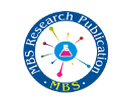Past Issue | Volume | Volume 6,Issue 8,Aug,2020
![]() Post Traumatic Growth during a pandemic: A literature review
Post Traumatic Growth during a pandemic: A literature review
Abstract:-
The rapid and extensive spread of the COVID-19 pandemic has become a major cause of concern for the healthcare profession. The theory of post-traumatic growth suggests that people can emerge from trauma or adversity having achieved positive personal growth. This holds good as we live through a pandemic that’s upending lives for people around the globe. Even though the current crisis can bring with it opportunities for personal growth and family cohesion, disadvantages may outweigh these benefits. Anxiety, lack of peer contact and reduced opportunities for stress regulation are main concerns. Children, adolescents and youth are the ones mainly affected as they grapple about their future due to various stressful factors. Studies have shown that college students have a lot of anxiety due to both academic and job-related problems, this includes pre-licensure nursing students. The post-traumatic growth framework is an integrated approach that includes elements of cognitive-behavioral therapy, along with other aspects that emphasize personal growth. it is important to study about post traumatic growth among different age groups and across settings. Based on findings PTG models can be created to help people identify their strengths from the challenges faced and teach them how to deal with and overcome stress as they continue to face the pandemic.
![]() A Mapping Field of Schizophrenia: A Study of Bangladesh
A Mapping Field of Schizophrenia: A Study of Bangladesh
Abstract:-
Schizophrenia is a serious mental illness in health condition associated with unusual expressions or perceptions of reality. It can lead to significant social or occupational dysfunction.It can feature auditory hallucinations, or hearing things that are not there. Less commonly, the persons may experience visual hallucinations, in which they see things that they do not exist.Schizophrenia is a mental illness characterized by continuous or relapsing episodes of psycho-social clinical aspect.
Need PHD Research Writing Help?

